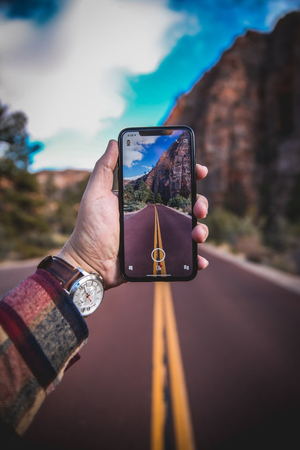A Mobile App Strategy

Note: This post just describes the product objectives, because I left InsureMyTrip before we got to design deliverables or the app was built. What was built was something different and didn't do well and, for business reasons, was pulled from the market.Sometime after completing the InsureMyTrip website redesign project and handing the new website off to another product manager, I was tasked with creating InsureMyTrip's first mobile application. Like the website redesign project, I envisioned putting together a great team, building a great product, and then passing that product and team off to someone else to continue evolving our mobile solutions. I called the project Mobility rather than Mobile because I wanted the team and the organization to never forget that the app was going to be used in mobile moments that happened everywhere.
Mobile moments are a good segue to performance. The most common mobile moment is to check your phone while you're waiting. And nobody wants to wait while they're waiting. That's painful twice fold. The mobile app had to perform very well. I grew up before automated teller machines and rejoiced at the convenience they provided. For about a week. Then I found myself tapping my foot impatiently while the ATM took too long. Speed makes haste?
Performance was important, too, because I expected a lot of our people to use this app (eventually). I was aiming big. I didn't want to create a mobile app that just copied our website. I didn't want to create an app that looked like any other travel insurance app. I wanted to use the mobile app to change how people thought of and used travel insurance.
Most people use travel insurance in one of two ways: 1) They make travel plans. They buy travel insurance. They leave on their trip. Nothing goes wrong. They come home. Or 2) They make travel plans. They buy travel insurance. The leave on their trip. Something goes wrong. They come home. They file a claim.
What many travelers don't realize is that most travel insurance plans come with 24/7 assistance while they're traveling. Not just for when something goes wrong, but also for when they want to find a reliable place to exchange currency or want help getting exclusive theater tickets. If travel insurance was used more often by more people during their trips, more people would see more value in travel insurance. And they'd tell two people. And so on.
I set a product roadmap for our travel insurance mobile app that would surface the assistance provided by the travel insurance companies and also provide new types of assistance from InsureMyTrip, such as destination information guides and real-time, peer-to-peer recommendations. And this is where I have to stop myself from going into details about the ideas.
I set another lofty goal for the project not just to produce a mobile app but to become someday the mobile backbone for travel insurance, for other insurance companies and for other travel apps. My thinking about the backbone was influenced by many sources, including FastCo's "Facebook's Plan to Own your Phone," which included this quote: "Whenever and wherever you are thirsty, Coca-Cola will be there for you. Zuck wants Facebook to be just like that."
We worked hard thinking through our ambitious objectives, our customers, all their use cases, and how to keep the experience of a complex system simple. We filled up every whiteboard we could fit in the room with project principles, quotes for inspirations, lists and lists of ideas, sketchy wireframes, requirements, and the like. I believed that a different mobile app from InsureMyTrip could change travel insurance and help more people have better trips.